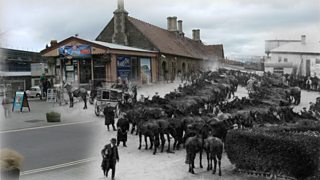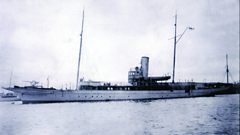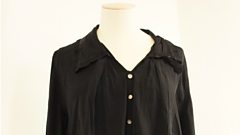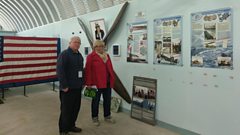
Caersalem Newydd Chapel, Treboeth: A Swansea Miner in Palestine
We see how Welsh miners from Swansea find themselves over ten thousand miles from home, serving in the Royal Army Medical Core in Palestine during the First World War.
One hundred years after the First World War and many people are still unaware that young men from Wales and across the rest of Britain were sent to serve far beyond the Western Front and the fields of Europe.
We see how Welsh miners from Treboeth in Swansea find themselves over ten thousand miles from home, serving in the Royal Army Medical Core in Palestine during the First World War.
Daryl Evans is in Caersalem Newydd Chapel in Treboeth 鈥� the same chapel attended by his late grandfather, Evan Samuel Rees. Near the entrance is a Roll of Honor listing all the local men in the area who served in the armed forces. Amongst those named are sixteen members of the Royal Army Medical Core 鈥� men who chose to serve their country but not bear arms. Evan Samuel Rees was one of those men.
Daryl has with him a small brass box containing a collection of faded photographs of his grandfather鈥檚 time in Palestine and Egypt during WW1. Each photograph has a handwritten description on the back, almost like a postcard, which he would send home to Wales a century ago.
Today, as the Nation pauses to remember, it is simple photographs like this which transport us back to those days of the Great War when a postcard or photograph sent home meant everything to one family at war. Unlike the men fighting on the Western Front, men serving as far away as Egypt or Palestine would never return to Wales until the end of the war.
The Royal Army Medical Corps was formed in 1898 to provide medical facilities for soldiers on the battlefields. The most common form of RAMC unit during WW1 was the Field Ambulance and this was the unit which Evan Samuel Rees and fellow local men were part of. They consisted of 10 officers and 224 men who provided immediate medical treatment for casualties from the areas where the fighting was taking place. Wounded soldiers would be assessed and treated and moved on to the next level of medical facility 鈥� usually a Casualty Clearing Station.
Before war broke out in 1914, Europe鈥檚 empires ruled over vast territories in Asia, the Americas, Australia and almost all of the African continent, and its people found themselves at war. When the fighting began there was a rush to secure vital strategic interests and all sides also drew up plans for the parts of the world they planned to take control of once the fighting was over.
In 1914 large areas of the Middle East were under the control of the Turkish Ottoman Empire. When the Turks sided with Germany, Britain wanted to retain control of the oil fields established in Mesopotamia - the area we now know as Iraq. This region became the focus of a bitter and costly conflict.
So Germany goes to war with Britain which involves Germany鈥檚 Allies - Ottoman Turkey. The British seek to defend their interests in the Middle East against the Turks but they do so using the men from their own empire - men from India, men from New Zealand and men from Australia . And they turn to their ally, the French, who bring in their men from their Empire 鈥� men from North Africa and West Africa.
It wasn鈥檛 until the end of 1918 the British finally defeated the Ottoman Turks and set about, along with the French, establishing themselves as the dominant power in the Middle East .
Today this whole campaign along with 100,000 British and Indian casualties has been largely forgotten 鈥� but it shows us how a conflict in Europe spilled out into other continents.
Location: Caersalem Newydd Chapel, Treboeth, Swansea, SA6 7PF
Images courtesy of Mr Daryl Evans, John Ball and Museums and Heritage Service, Winding House, Caerphilly County Borough Council
Duration:
This clip is from
Featured in...
![]()
Religion in Wartime—World War One At 成人快手
Quakers, chaplains & religious belief
![]()
Video & Footage
Clips from programmes, WW1 footage & slideshows
![]()
成人快手 Radio Wales—World War One At 成人快手
Places in Wales that tell a story of World War One
![]()
Soldiers from Different Nations—World War One At 成人快手
ANZAC and Commonwealth troops
More clips from World War One At 成人快手
-
![]()
The loss of HMY Iolaire
Duration: 18:52
-
![]()
Scotland, Slamannan and the Argylls
Duration: 07:55
-
![]()
Scotland Museum of Edinburgh mourning dress
Duration: 06:17
-
![]()
Scotland Montrose 'GI Brides'
Duration: 06:41







